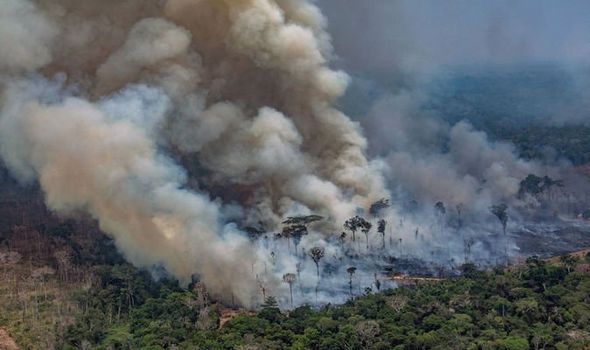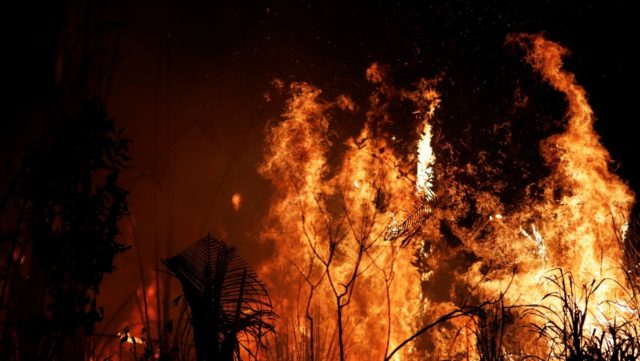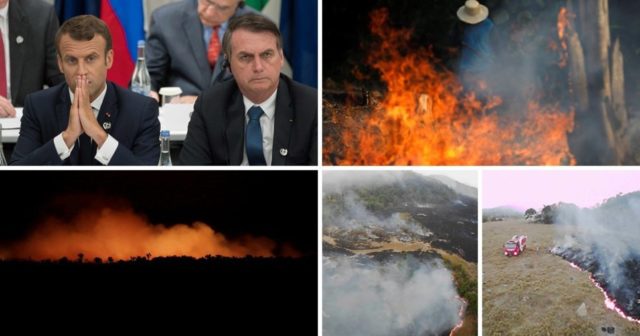For a month now, the Brazilian amazon rainforest has been burning. A surface about 8 times the size of Costa Rica has been reduced to ashes. The causes of this disaster are in dispute. It has been attributed to the fires ranchers, loggers and farmers set off to clear land for grazing areas or to keep open the areas already deforested. The practice, usually carried out this time of the year, is known locally as “temporada de la queimada” or burning season. This produces the necessary nutrients for planting, but at the same time releases high levels of toxic gases into the atmosphere. On a controversial note, Brazilian President Jair Bolsonaro has blamed environmentally-oriented NGOs for the fires. Bolsonaro, a former captain of the Army reserve, has been in favor of exploiting the Amazon and of reducing the environmental controls in protected areas.

According to the National Institute of Space Research (Instituto Nacional de Pesquisas Espaciais, INPE) there are more than 80,000 sources of fire in Brazil, mostly in the Amazon. This figure indicates an 85% increase in the amount of fires recorded in the same period of 2018. Specialists point out that even when wildfires are frequent during dry season the alarming increase in fires in the Brazilian Amazon is mostly due to deforestation activities and not to the season itself.
*8 Amazonian Facts*
The rainforest…
~ Covers 7,000,000 km² and spreads over 9 countries: Brazil, Ecuador, Venezuela, Surinam, Peru, Colombia, Bolivia, Guyana and French Guiana.
~ Contains about 30% of all terrestrial species. 1 out of 5 of all bird species that exist in the world are from the Amazon. According to the World Wildlife Fund (WWF) and Brazil’s Mamirauá Institute, almost 400 types of animals and plants from the Amazonic region were officially recognized by science as new species in 2014 and 2015.
~ ls the ancestral home for numerous indigenous peoples. These are divided in about 400 different groups, each with its own language, culture and territory. While some of them have maintained contact with foreigners for almost five centuries, others are still “uncontacted”.
~ Is widely known by a catchy misnomer: “The Lungs of the Planet” (lungs do not produce oxygen, they consume it). Nevertheless, the Amazonian forest is a carbon sink that helps regulate global warming. According to the WWF it absorbs more CO², (90,000 to 140,000 million tons) than it emits and releases oxygen. Most of this oxygen is used up by the forest’s plants and animals. Scientists have warned the destruction of the forest is a serious blow to the fight against climate change.
~ Continues to be the main source of active ingredients for medicines and other products. As as not all therapeutic substances can be created in the laboratory, more than half of the drugs produced by the pharmaceutical industry come from plants and animals from the jungle. Here’s some examples:
Curare, an ancient poison now used in modern anesthetics,
Quinine, the main remedy against malaria;
Derivatives from the venom of the bothrops jararaca (a South American snake related to the Costa Rican Terciopelo) with anticoagulant, antithrombotic and hemostatic properties; all are used in modern medicine.

~ While social networks have helped raise the public’s awareness about this crisis, they have also contributed to misinformation. Some of the most shared images of the Amazon jungle fires are old or not from the Amazon. They show animals that are not native to the region and fires from places like Sweden, India, California and Montana (US). Media celebrities like Leonardo Di Caprio, Ricky Martin, Jaden Smith, Madonna, Will Smith, Ariana Grande, Cristiano Ronaldo have used them both as call to action and to voice their concern about the situation
~ President Bolsonaro advocates for the opening of indigenous reserves and protected areas to agricultural activities and mining. Even so, last Friday Bolsonaro authorized sending 2,500 members and teams of the Armed Forces to the Amazonian states that request them to help stop deforestation and fight fires.
~ Several countries such as Venezuela, Chile, Ecuador, Colombia and Bolivia have offered their help to Brazil in order to fight the fires. The Ministry of Foreign Affairs of Costa Rica has also expressed its “deep concern over the devastating” forest fires.
*Why Should We Care?*
In a few words, because all the world’s ecosystems are interconected and what is happening to the Amazon rainforest is not just a local issue. Also because this is the only planet we have and everything we do to to it has consequences. Even our mere presence on Earth for instance.
Human population on the planet has doubled in the last 50 years. Now there are nearly eight billion people on it. The way our society does things uses up a vast amount of resources, products and services. Recent data reveals that in order to meet its current needs, humanity is consuming an amount of natural resources equivalent to 1,6 planets. And our consumption patterns continue to grow.
Only recently we have begun to understand our place on Earth.

*What now?*
Changing this global trend is not going to be easy. It requires a radical change in the lifestyles of an entire world. We need to develop a sustainable economy that limits the use of natural resources. Evolve from careless users of a warehouse of unlimited aboundance, whose sole purpose is to satisfy our needs, to caretakers of a small spaceship whose limited resources we are stretching dangerously.We can blame governments, corporations and financiers for the situation but how about us?
Review your consumption patterns. How often do you opt for ecofriendly alternatives?
Is having more agricultural lands worth more than the lives of thousands of animals, flora and even humans from indigenous communities?
Do we really need to consume and waste so much in order to enjoy life?
So recycle. Repair. Save water and electricity. Plant trees. Use less chemical products, less fossil fuels, less plastics, less paper. It is not too late to help protect not only the Amazon forest but the entire planet.
“When the Last Tree Is Cut Down, the Last Fish Eaten, and the Last Stream Poisoned, You Will Realize That You Cannot Eat Money”

